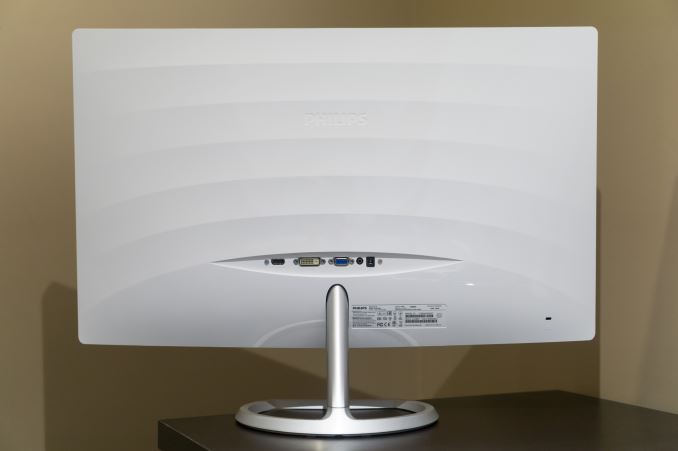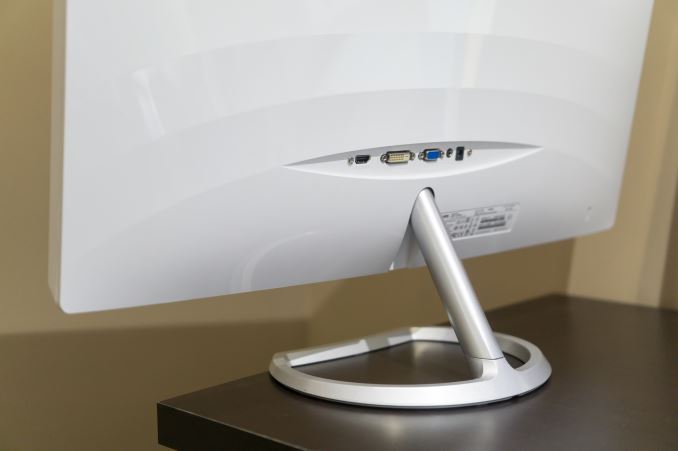A Look At QD Vision's Color IQ And The Philips 276E6 Monitor: Quantum Dots for Wider Color Gamuts
by Brandon Chester on April 28, 2016 8:00 AM EST- Posted in
- Monitors
- Philips
- Quantum Dot
- QD Vision
Final Words
QD Vision's Color IQ tech certainly delivers. In the case of the Philips 276E6, it actually delivers more than what it promises. Technically the monitor doesn't meet the Adobe RGB spec, but this is mostly due to it exceeding it rather than falling short. The gamut that it achieves is clear evidence that this quantum dot technology can be employed in monitors with relatively low prices to achieve a wide color gamut, which is something that has only existed on a small group of premium monitors until now. Given that the Philips 276E6 shows oversaturation with its red primary, I would be interested in seeing Color IQ used in a monitor targeting the DCI-P3 color space which is about to become the canon color space for UltraHD content as we move away from sRGB on a path toward eventual Rec. 2020 support.
While the Philips 276E6 is certainly a successful demonstration of QD Vision's quantum dot technology, it's difficult to say that it's successful as a product in its own right. This is a combination of two factors, with one of them being primarily an external factor.
From the last two pages it's pretty clear that Windows is not ready at all for a transition to a world beyond sRGB, and even within that gamut it makes it quite a pain to do basic color corrections. For many years, vendors who ship wide gamut displays have identified this issue and provided a fix of sorts in the form of an sRGB monitor mode which constrains its gamut so the vast majority of content on the web will render correctly without relying on proper color management. With Philips being a new entrant to this space, it seems that they were either not aware of, or underestimated the necessity of such a feature. I want to stress that this isn't something that any of these vendors should have to do, but when the most widely used desktop operating system doesn't do a good job with color management, it's something you need to do to provide a good experience for your users. Philips hasn't helped this problem by also not even providing a proper ICC color profile so that applications that actually are color managed will work correctly.
The second factor is that the Philips 276E6 is just not where it needs to be in terms of uniformity and color accuracy. Based on my measurements of two of these monitors, it's clear that Philips is allowing a large degree of variance between units. Out of the box, it's hard to tell what settings provide the most accurate image. On my original unit it was the Adobe RGB preset, while on the second unit it's the 6500K preset. Regardless of which I chose, both monitors exhibited concerning issues with color accuracy, and both had an oversaturated red primary. I'm not the only reviewer to find this, and so it's probably true of all the units which is very disappointing.
Post-calibration numbers were better in some respects, but not others. The big shift in saturation accuracy with the 200 nit calibration was very surprising to me, and it may be best to not tweak the white point at the monitor level at all. Unfortunately, making more corrections through greyscale calibration means you reduce the tonal range of the monitor further by limiting the number of distinct levels for the red, green, and blue components, which can introduce color banding. On top of that, the fact that the Philips 276E6 is trying to target a low price point means that the idea of calibrating with a $1500 spectrophotometer using $3000 software is quite absurd, and the very large variance between panels means there's not even any point in me providing an ICC profile to be used in a general manner.
In the end, I think Philips simply has some things to learn about the wide gamut monitor market, and I'm still quite interested in seeing what future products they release, along with what future products will come from other manufacturers. Philips should definitely be applauded for taking the first step toward low-cost wide gamut displays, and if they can improve their panel accuracy and include a proper sRGB color mode they'll have a very compelling product on their hands. If 1920x1080 is the target resolution to manage cost I would probably opt for a smaller panel size as well, as the pixel density is just too low on a 27" panel.
On the software side, the companies that currently ship operating systems with essentially non-functioning color management need to get their act together. Wide gamut displays are coming, and not handling multiple color standards properly is incredibly detrimental to the user experience.
As for Color IQ, I think the technology has a bright future. It's clear that it can be added to displays with only a minimal impact on price to the consumer, and the advantages are significant. The tech can clearly push a wider red primary than the Adobe RGB standard specifies, so I'd like to see some DCI-P3 monitors using the tech so consumers can take advantage of upcoming UltraHD content that will support the wider color space. As a technology, I think Color IQ will probably exist alongside film-based quantum dot technologies, as edge-lit LCDs are never going to properly support HDR standards because of their inability to do proper local dimming, and a film solution is the only feasible way to use the tech in smartphones and tablets. However, with the majority of the TV and monitor market using edge-lit displays there's a huge opportunity here to bring wider color gamuts to the masses. While I cannot really recommend buying the Philips 276E6 in its current state, I'm looking forward to future products that use QD Vision's Color IQ technology, both from Philips and from other vendors that I anticipate will adopt this technology soon.












51 Comments
View All Comments
willis936 - Friday, April 29, 2016 - link
I'm skeptical of your first claim without seeing data.As for the second that's why packages lime dispcalgui exist.
Brandon Chester - Friday, April 29, 2016 - link
Again, that doesn't help the fact that software needs to support it. I think you're confusing greyscale calibration and color management here. If there was some easy way to fix color management across all Windows programs this would not be such a long standing issue.UrQuan3 - Thursday, May 12, 2016 - link
"Cheap colorimeters are so inaccurate that they're basically useless."I'm going to have to go with willis936 on your first comment. It sounds rather like someone driving a Ferrari saying that a Mustang has so little horsepower it is useless. To the average car owner, they're both godlike. In practice, a little $100-200 colorimeter makes a large improvement on almost any monitor. Expensive calibration for expensive monitors. Of course, use the best gear when doing a review.
I wonder how you would review calibration tools? That does not sound easy.
Pork@III - Thursday, April 28, 2016 - link
Too bad against full cover CCFLAzurael - Friday, April 29, 2016 - link
It's possible to get a 27" 2K display for $300 equivalent in Europe... I've got a Hannspree HQ271HPG which even with VAT is £200. I wouldn't say it's the best thing in the world (stuck with HDMI 1.4 & DL-DVI and hiding >1cm behind a piece of glass) but it is IPS, it calibrated up nicely (to sRGB) and the backlight consistency is much better than most cheap monitors on my sample (although it does have a bit of bleed visible at the very edges on a totally black screen.)Gunbuster - Friday, April 29, 2016 - link
I know it's a cheap monitor but dear lord, did they have to make the bezel so chunky that it looks like a 22" in photos?Haravikk - Friday, April 29, 2016 - link
Why does this include a VGA port?I'd also much prefer down-facing ports, and some kind of cable management, monitors that don't include these always confuse me.
zodiacfml - Saturday, April 30, 2016 - link
Thanks for always including a tutorial and in-depth look of color management. I quite understand the challenges of the industry.You are correct that Philips should be applauded for taking the first step as this will take time to improve as OLED/AMOLED of Samsung has improved throughout the years. For now, the Philips seems useful for increasing saturation/vividness of content for entertainment.
Questions:
1) Isn't better for Philips to target a higher color space despite coming short for now (as conversion from a bigger space to smaller seems straightforward)? The Adobe RGB doesn't improve from the sRGB space in the "reds" where the most benefit from quantum dots can be had. I believe this primary color should be given attention as content to show this is widely available in photos such as flowers, sunsets, and red sports cars. I have seen too many red subjects looking flat like plastic.
2) How does color spaces Rec. 2020 and Pro Photo RGB relate to each other? They seem to have the same coverage but obviously for different applications.
zodiacfml - Saturday, April 30, 2016 - link
I did some reading and found the problem already which is color bit depth. What are the currently supported bit depths supported by video cards and monitors?Oxford Guy - Monday, May 2, 2016 - link
AdobeRGB is obsolete.